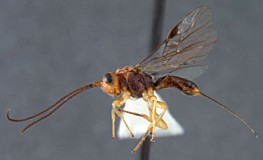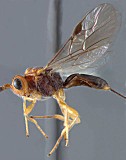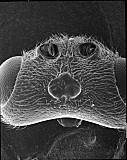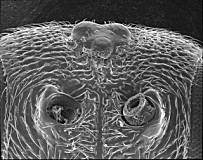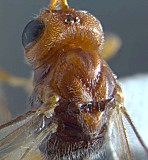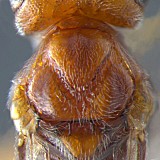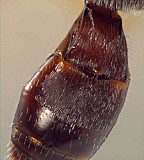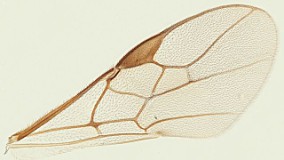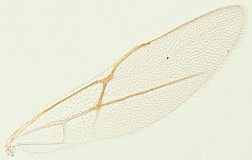Fopius arisanus (Sonan, 1932)
Prior to the description of Fopius, the species now placed in this genus were most frequently included either in Opius or Biosteres. This particular species has also been placed, occasionally, in Diachasma. Thus, the names Opius oophilus, Biosteres oophilus, and Diachasma oophilus all refer to Fopius arisanus.
Fopius arisanus has achieved a competitive advantage over other introduced parasitoid species in Hawaii. Wang and Messing (2003) have shown several mechanisms by which F. arisanus optimizes its parasitization capabilities including adjusting foraging time according to patch quality cues (presence of plant injury odors, kariomones, and previous experience in patch), utilizing a fixed set of host location behaviors (antennating, probing, detecting, and ovipositing), and discriminating nonparasitized from parasitized hosts for oviposition.
Similar to results from previous experiments with Diachasmimorpha tryoni (Wang and Messing 2003), Diachasmimorpha krausii, and Psyttalia concolor (Wang and Messing 2002), Wang et al. (2003) found that F. arisanus was the superior competitor when matched with Diachasmimorpha longicaudata. As an egg parasite, F. arisanus arrives on the host (Ceratitis capitata and Bactrocera dorsalis in these experiments) prior to D. longicaudata, a larval parasite, and suppresses development of D. longicaudata, primarily at the egg stage. The authors also report that in experiments with the 4 larval parasitoids none were able to directly destroy F. arisanus larvae during parasitism. Although a superior competitor among many fruit fly parasitoids, F. arisanus does not flourish in all environments including higher elevations and lower temperatures, and is not adapted to certain tephritid hosts including Bactrocera cucurbitae. These recent studies verify and expand on the earlier studies of interspecific competition by van den Bosch and Haramoto (1951), van den Bosch and Haramoto (1953) and Bess et al. (1961). For a detailed review of the biology of this species, see Rousse et al. (2005).
Fullaway described Opius oophilus on the basis of specimens collected in Hawaii following the introduction of this species against Oriental fruit fly in the late 1940s, but oophilus was later recognized as a synonym of arisanus, originally described from Taiwan. The actual country of origin for the material introduced to Hawaii is uncertain (though believed to be Malaysia). Fopius arisanus has subsequently become established in several other countries, including Australia, Costa Rica, Fiji, and Mauritius (Wharton et al. 1981, Wharton and Gilstrap 1983) as a result of purposeful redistribution from Hawaii targeting a variety of pest tephritids (Wharton 1989). For a more recent summary, see Rousse et al. (2005).
There are no specimens currently determined for this OTU, or those specimens determined for this OTU are not yet mappable.

